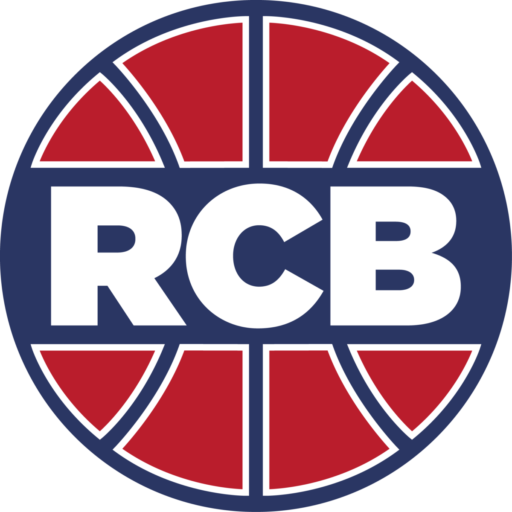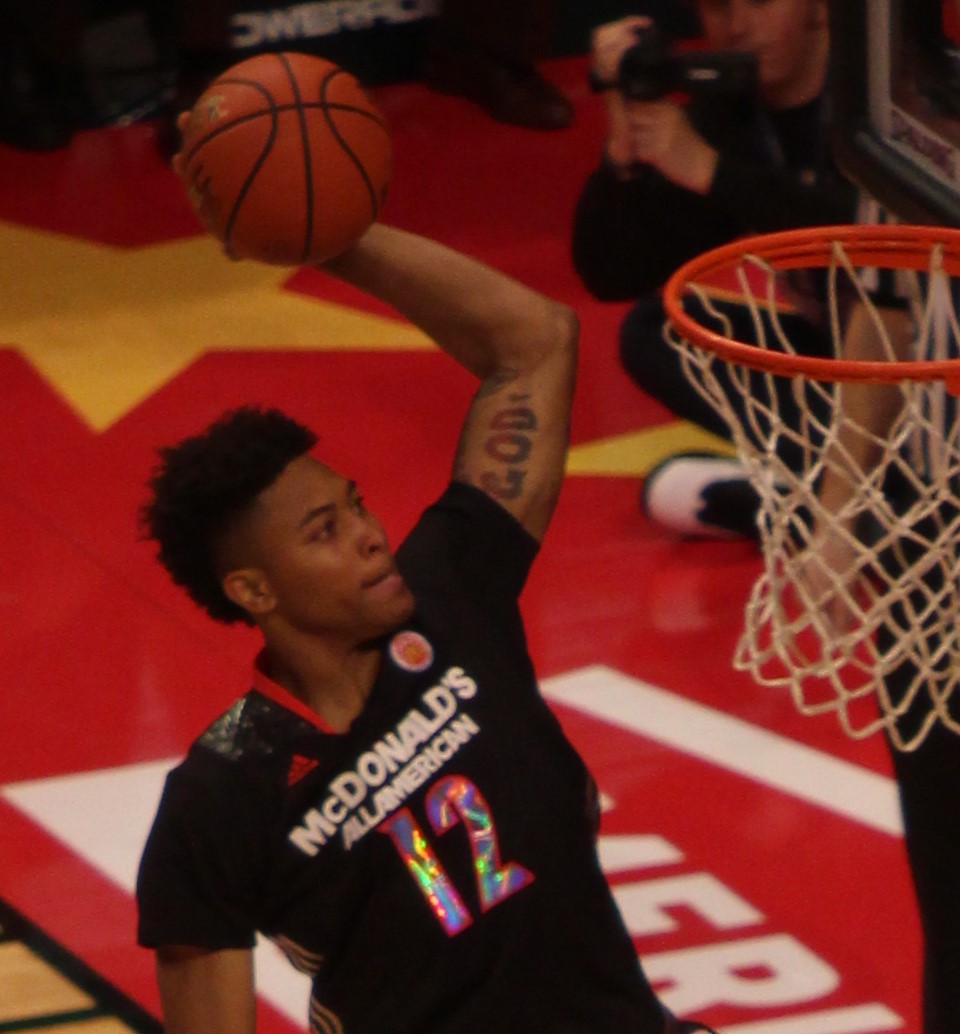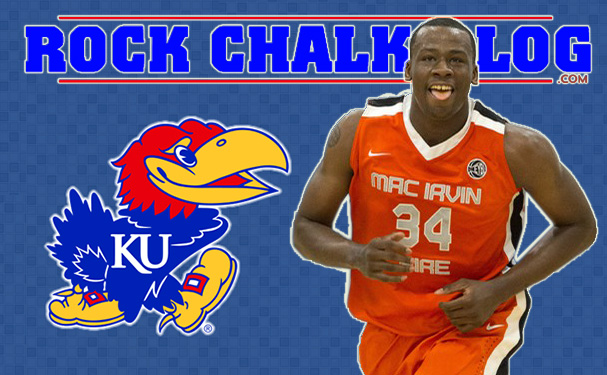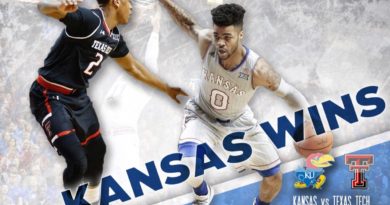Projecting the future of Andrew Wiggins
KU’s most heralded one-and-done has enjoyed a successful start to his NBA career, winning the 2014-15 Rookie of the Year award while following that up with a sophomore campaign in which he is currently scoring just over 20 points per game. So, just how good can Andrew Wiggins be? Let’s take a look at his career to this point and see what it suggests for his future.
Andrew Wiggins arrived in Lawrence as one of the most coveted recruits of college basketball’s “one-and-done” era, an era that commenced with the 2006 recruiting class and was headlined by former Texas Longhorn and current Oklahoma City Thunder star Kevin Durant. Wiggins’ time at Kansas was predictably short, but the ultra-athletic guard made impressive contributions for a very young Jayhawk squad, leading the 2013-14 team in points and steals while playing in 81% of the team’s total minutes. Though KU bowed out of the NCAA Tournament at the hands of Stanford in the third round, Wiggins’ time as a Jayhawk had fans eager to see if he was up to the challenge of the NBA. It didn’t take long for him to prove that he was.
Wiggins, a Toronto native, was drafted #1 overall in the 2014 NBA Draft by the Cleveland Cavaliers and was soon packaged as part of a deal that sent all-star Kevin Love to Cleveland and sent Wiggins to the Minnesota Timberwolves. Of course, this trade was made shortly after LeBron James made the decision to return to the Cavaliers. For Cavs brass, pairing the aging LeBron with an experienced talent in Kevin Love, along with emerging star Kyrie Irving made sense, as LeBron’s prime years were numbered. For Wiggins, the trade allowed him to become the centerpiece for an extremely young Minnesota Timberwolves team, a role that very few rookies are accustomed to shouldering.
Thanks in large part to his role along with impressive durability, Wiggins led all rookies in minutes played by a large margin, as he appeared in and started all 82 games. In addition, Wiggins led all rookies in scoring at 16.9 points per game while being third amongst all rookies in usage rate. Wiggins’ ability to score, defend, and make highlight reel plays made him the overwhelming choice for NBA Rookie of the Year, to go along with his MVP performance at the NBA Rising Stars Challenge. Wiggins, who also won NBA Rookie of the Month four times throughout the season, had a largely successful rookie campaign. However, the verdict, for some, was still out.
The data based website, FiveThirtyEight.com ran a piece roughly three months into Wiggins’ rookie season titled, “Forget The Next LeBron, Andrew Wiggins May Not Be The Next James Posey.” Not exactly a ringing endorsement from an analytic perspective in projecting the former #1 pick. But what to make of the gap between Wiggins’ advanced numbers, and what the average fan sees while watching him play? For one, as usage rates rise, efficiency numbers tend to decline at a similar rate. As a 19-year-old rookie, the shouldering of such a heavy offensive out is not likely to produce extremely efficient numbers. Secondly, the Timberwolves were bad, really bad. Minnesota finished the 2014-15 season at 16-66, bad enough to win the 2015 NBA Lottery.
Before the start of the 2015-16 NBA season, our friends at FiveThirtyEight had a bit more optimistic outlook of Wiggins. Based on their CARMELO projection system, FiveThirtyEight projects Andrew Wiggins to essentially be as good as New York Knicks star, Carmelo Anthony. Looking at a player comparison between James Posey (Wiggins December 2014) and Carmelo Anthony (Wiggins October 2015) shows just how fickle player projections can be.
Nearly halfway through his second season, Andrew Wiggins appears to be heading more toward his projected ceiling of Carmelo Anthony than he does the career arc of James Posey. The young Timberwolves continue to slowly, but steadily, improve, thanks in part to rookie and #1 overall pick, Karl-Anthony Towns, but primarily to Andrew Wiggins. Even with the addition of Towns, Minnesota is relying on Wiggins even more this year, as his usage rate has risen to nearly 29%, which is 15th-most in the entire league. As Wiggins’ usage has risen once again, so has his scoring, currently averaging just over 20 points per game, 18th in the entire league. Though Wiggins’ three-point and free throw percentages have fallen, his effective field goal percentage has essentially remained the same, a good sign for a player whose usage has dramatically risen.
As the Timberwolves continue to improve and build around the awesome duo of Wiggins and Towns, expect Wiggins usage numbers to slightly decline, his shooting percentages to rise, and for his game and reputation to resemble more of Carmelo Anthony and less of James Posey. No matter the result of his journey, we’ll always have 2014.






I discovered your blog site on google and check a few of your early posts. Continue to keep up the very good operate. I just additional up your RSS feed to my MSN News Reader. Seeking forward to reading more from you later on!…
Noble Drugstore
https://buytadalafshop.com/ – Cialis
https://buysildenshop.com/ – Viagra
Cialis
combining viagra and cialis
Priligy
Real Cialis
Prednisone
Major thanks for the article post. Want more.
Awesome blog article.Thanks Again. Fantastic.
Lioresal Posologie
Thanks-a-mundo for the article post.Really looking forward to read more. Much obliged.
viagra buy 1
Venta Viagra Valencia
Just got 2 FREE Grillz at MSM Jewelers – https://www.msmjewelers.com/collections/grillz. Grillz are on sale at MSM Jewelers, get the deals while you can!
Thanks again for the blog article.Really looking forward to read more. Really Great.